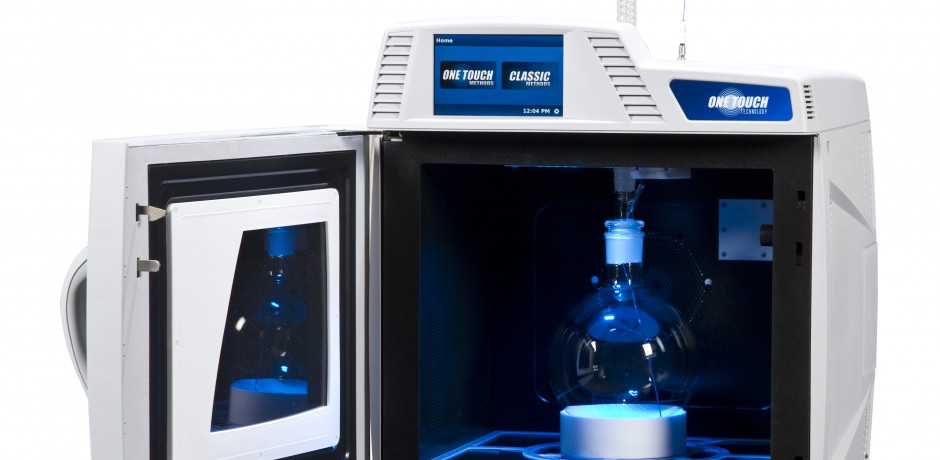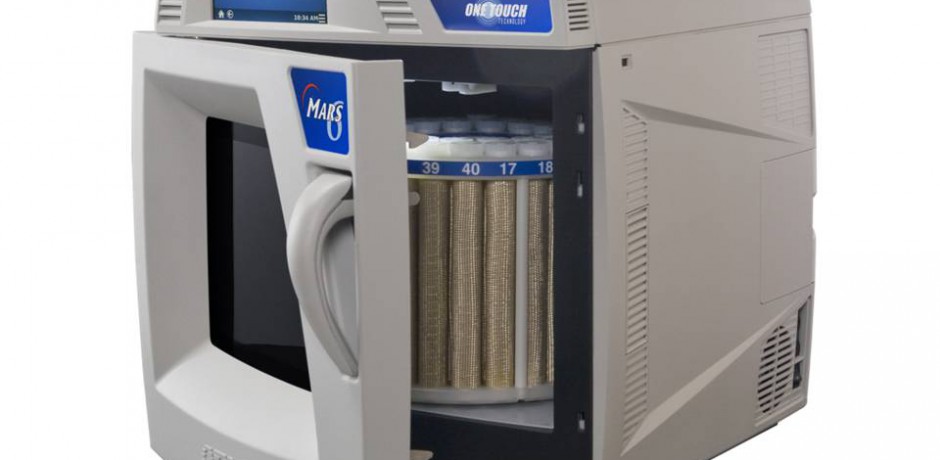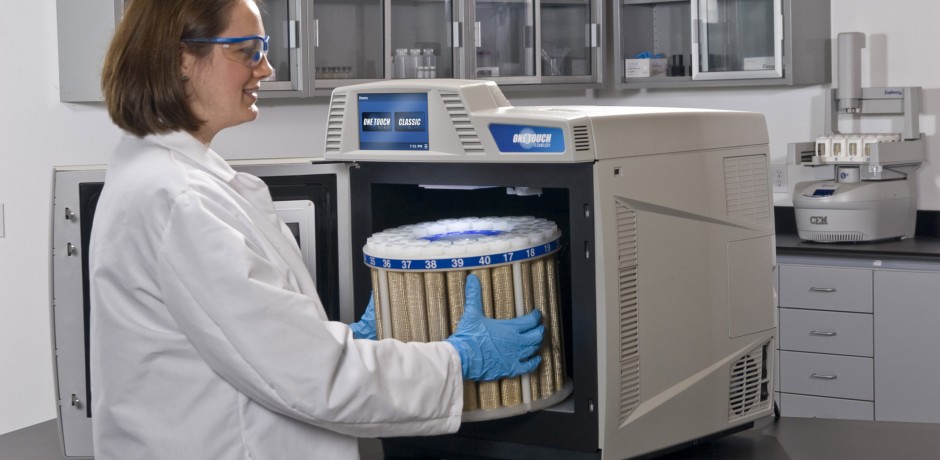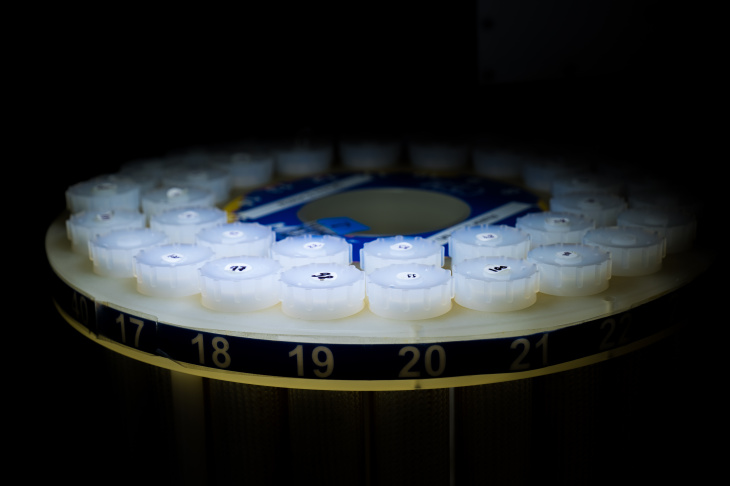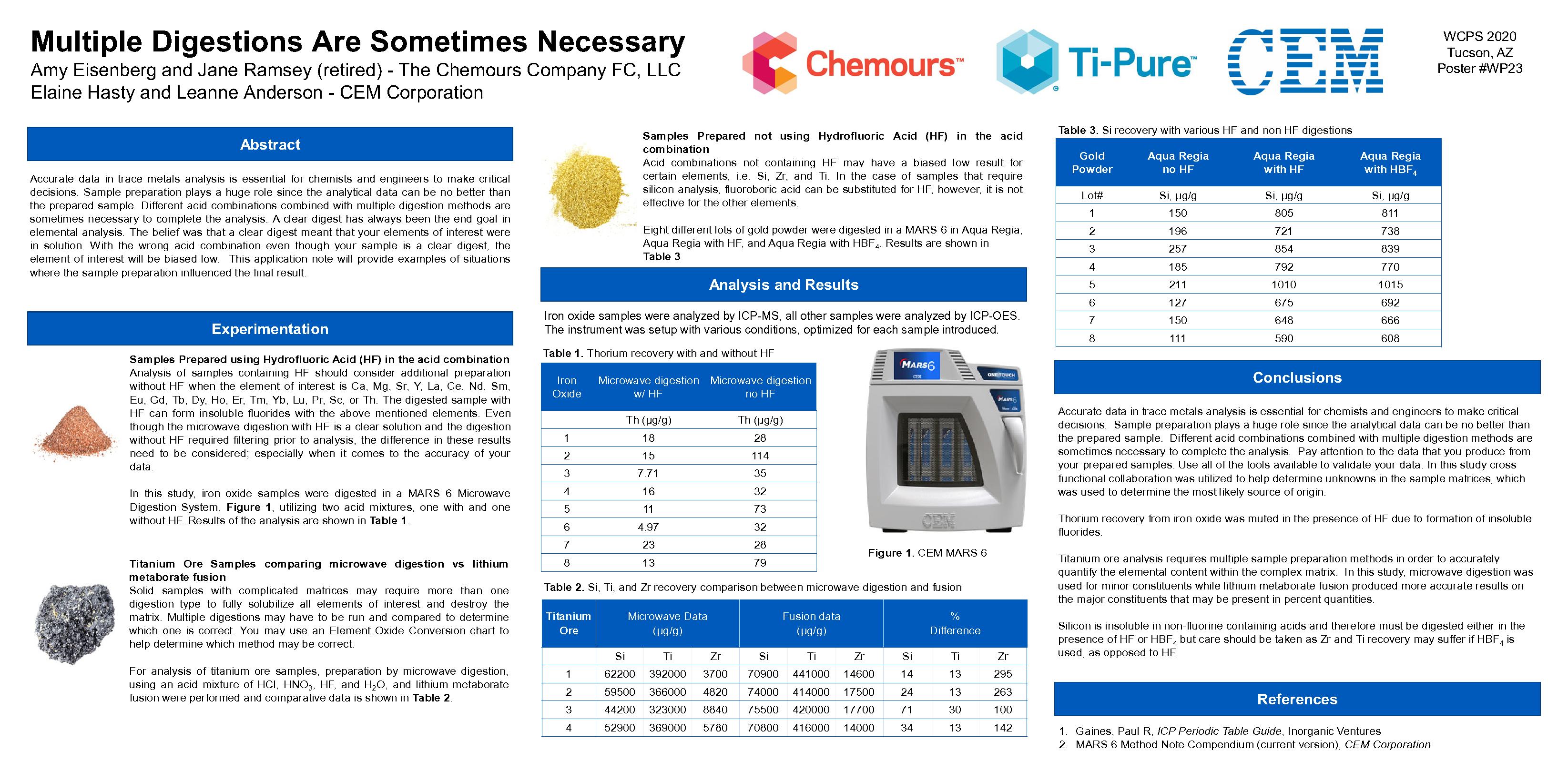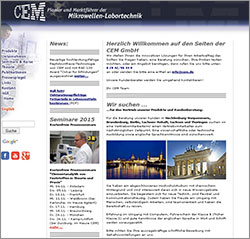Tag: Mars 6
Lösemittel-Extraktionen im MARS und EDGE
Soils and river sediments were frozen and freezedried at ETH Zürich. Soils were sieved, and the fraction <2 mm was used for further analysis. Analytical techniques for brGDGT analyses follow Hopmans et al. (2016) and Freymond et al. (2017) and are summarized here with a detailed description in the supporting information. Briey, between 2 and 3 g of the soil samples and around 20 g of the river sediments were
extracted with solvents in a microwave or an automated extraction system. After purification via column chromatography and preltration, the GDGT distributions were analyzed by high performance liquid chromatography mass spectrometry (HPLC MS) at ETH Zürich.
Extraktion mit dem MARS und EDGE:
Lipids were extracted from dried soil samples using a microwave (CEM MARS5) or an Energized Dispersive Guided Extraction (CEM EDGE) system. No difference in performance was observed for the different extraction systems. Samples were processed in batches of roughly 15 to 20 g of material. For microwave extraction the samples were transferred to the extraction vessels and covered by a dichloromethane (DCM):methanol (MeOH) 9:1 (v/v, 25 ml) solvent mixture. Extraction temperature was programmed to ramp to 100 ◦C in 35 min and is subsequently held for 20 min. For EDGE extraction 25 ml DCM:MeOH 9:1105 (v/v) was used for extraction at 110 ◦C for 2 min and subsequent rinsing with 15 ml followed by a second extraction with 5 ml of solvent at100 ◦C and rinsing with35ml. The process was repeated on additional samplebatches to yield sufficient quantities of the target lipid compounds for 14C analysis. Pooled extracts were then dried under nitrogen flow.
Mittwoch, 24.2.2021 um 14.00 Uhr
Soil is one of the most common matrices in which semi-volatile organic compounds (SVOCs) are present. The extraction of these compounds from soil can be a lengthy and tedious process. Pressurized Fluid Extraction on the EDGE and Microwave Assisted Solvent Extraction (MASE) on the MARS 6 are proven techniques that are fast, simple, and efficient. EDGE is ideal for difficult samples while MARS 6 is ideal for high throughput labs dealing with hundreds of samples per day. Adhering to US EPA 3545A the EDGE offers a rapid automated process that yields a filtered sample. Adhering to US EPA 3546, the MARS 6 also offers an efficient extraction of up to 24 samples simultaneously. These two techniques offers solutions for rapid, simple and efficient extraction of SVOCs from soil. Join CEM’s Benedict Liu and Alicia Douglas Stell, PhD as they compare two methods for extraction of SVOCs from soil and discuss how each system can benefit your lab.
Registrieren Sie sich und nehmen Sie an der Live-Fragerunde teil
Mikrowellensynthese im MARS:
Rapid, microwave-assisted synthesis of Gd2O3 and Eu:Gd2O3 nanocrystals: characterization, magnetic, optical and biological studies
Low level quantification of trace metals in rice using ICP-MS
Lesen Sie: Mikrowellen-Aufschluss mit dem Mars 6
The development of new—cheaper, more efficient, more sustainable, and more reliable—functional materials with useful properties calls for ever-improving, smart, and innovative synthesis strategies. A multitude of inorganic compounds are already used as energy materials, i.e., electrodes, catalysts, permanent magnets, and many more are considered highly promising for these and similar applications. Innovative synthesis techniques are developed, resulting in new compounds as well as known ones with unique structures and morphologies. Here, we will discuss the nonconventional solid-state methods, microwave heating and spark plasma sintering, highlighting their potential for the preparation of a plethora of inorganic compounds. Thermoelectric and magnetic materials are chosen as two examples of energy materials that are relevant for several different areas, such as waste heat recovery, energy generation, and refrigeration. The goal is to provide an overview of the inorganic compounds, ranging from intermetallics to chalcogenides and oxides, which have been prepared using these two nonconventional synthesis techniques. Furthermore, the reaction conditions as well as key properties regarding their thermoelectric and magnetic behavior are summarized.
mehr Infos Link
Vergleich der Mikrowellenaufschlüsse im Mars 6 mit HF, ohne HF und mit HBF4
Bessere Auflösung: Poster_Multiple_Digestions_are_Sometimes_Necessary_WinterConference2020
Biochemie in der Mikrowelle – Einsatz der Mikrowelle zur Synthese und Analytik von Peptden und Proteinen, A. Rybka und U. Sengutta, GIT 9, 572-575 (2009)
Biochemie_GIT
Biochemie in der Mikrowelle. Synthestrategien von Peptoiden, S. Vollrath und S. Bräse, Labor & More, 2-6, September 2013
Braese
Analyse von Aminosäuren, Proteinen und Nitroderivaten in atmosphärischen Aerosolen und Straßenstaub“, Promotion Tobias Fehrenbach, TU München 2006
Proteinhydrolyse




